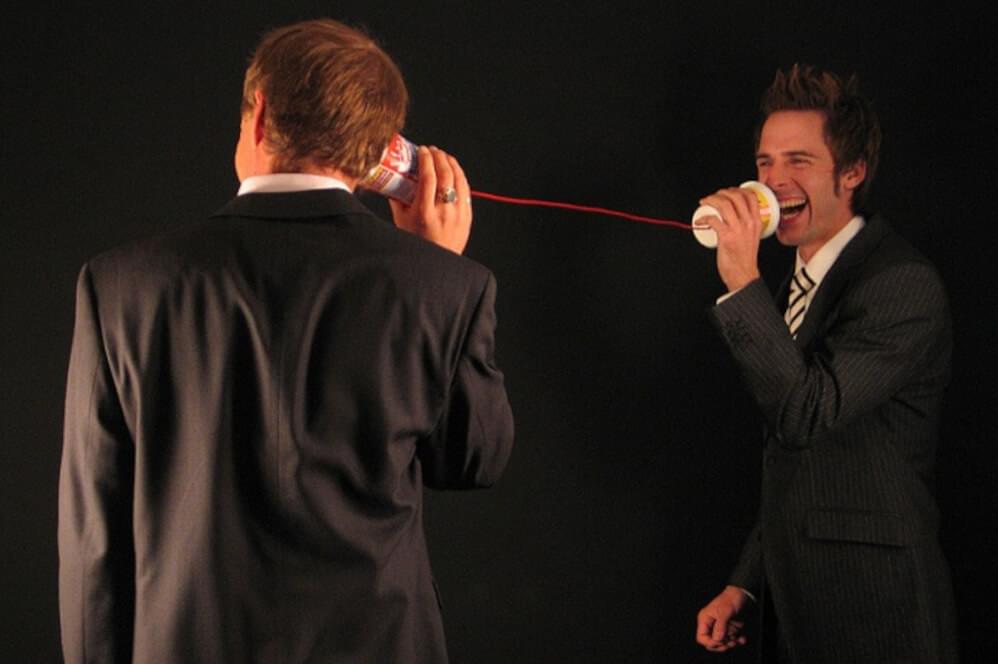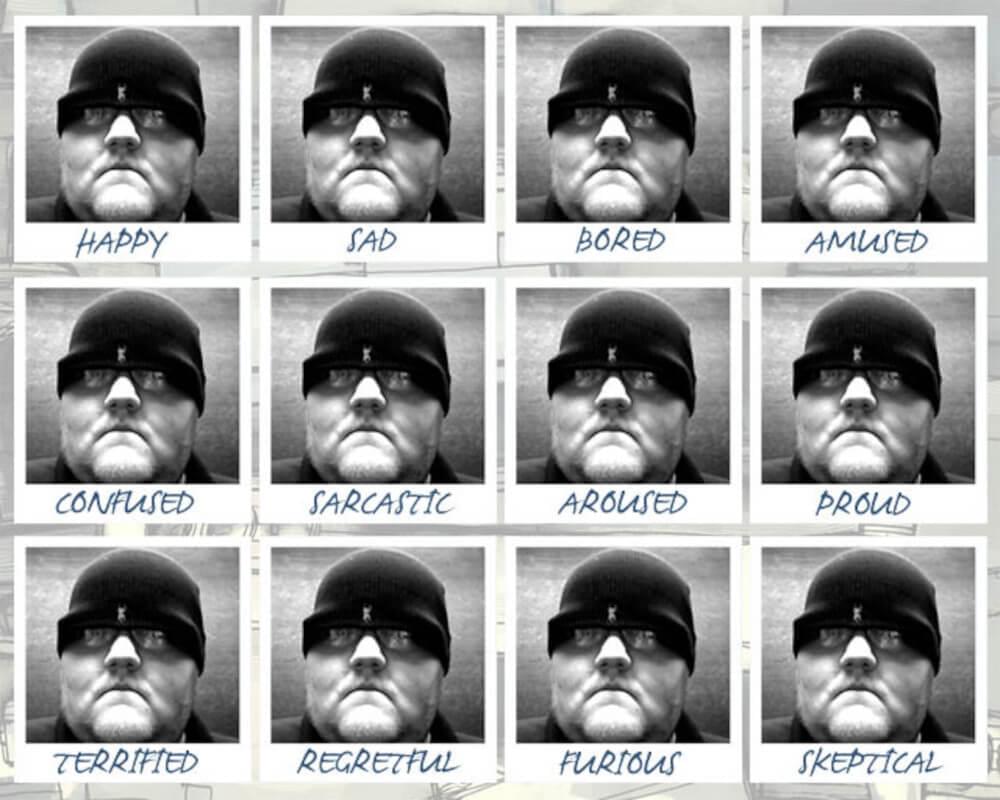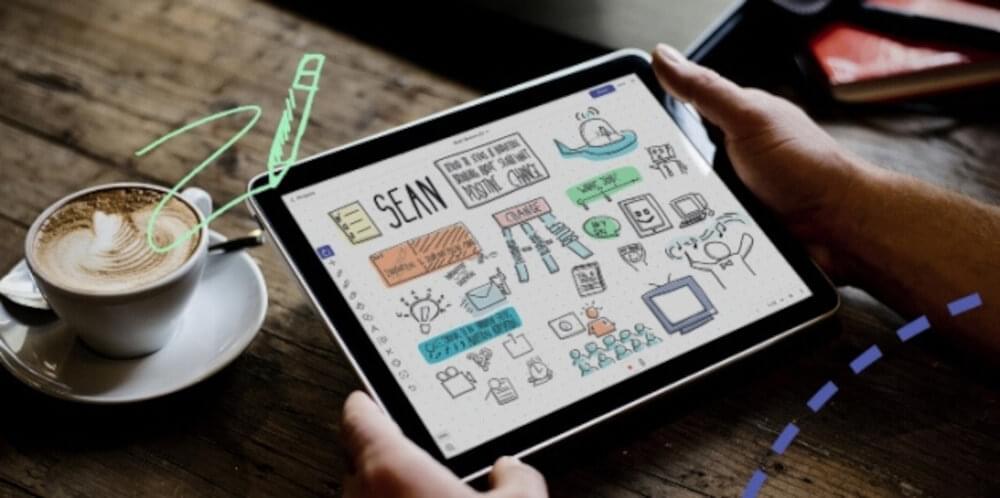accessibility tutorials
4 Common Types of Communications and Tips to Improve It (With Examples)
Communication is a key to business success, and vital for a healthy workplace. It is also a part of interpersonal soft skill that is necessary for individuals and business owners. In order to explain the importance of communication, we will highlight the main types of communication with examples.
To communicate is an act of passing information from one individual (or group) to another. There are several ways to communicate with others, and each type plays an important role in information sharing.
The type of communication depends on sharing information with which individual or group. Like, if you want to communicate with the CEO of your company, investors, vendors, or stakeholders, then the type of communication will be different than the one you choose to communicate with your colleagues or friends. So, choosing the communication type is crucial for fulfilling what you want to achieve, and it changes in different scenarios.
What is Communication?
The ‘Communication’ is an act of sharing information and ideas via different communication methods, like speech, writing or visuals etc. In a classical communication model, there is one sender who sends a message to one or more receivers (who gets the message).
The information should be decipherable and decoded to understand by the receiver. If the information or ideas are communicated properly, then the receiver will find difficulty in understanding the message. This may sound simple but effective communication is complex subject matter.
The message transmission between sender and recipient can be affected for a couple of reasons. There can be cultural gaps, emotional elements, geographical boundaries, distance between sender and receiver, medium used for communication, and technology used can have an impact on the quality of communication.
This complex situation makes communication skills a vital requirement in job descriptions by many employers across the world. Recruiters look for efficient communication as an important element in job seekers. The communication should be accurate, understandable, unambiguous, and effective to serve its purpose.
Methods of Communication
There are several methods used in communication, but the most common ones are as following:
- Personal interaction
- Written communication
- Text Message
- Telephonic communication
- Video Call
Communication Process
In a basic communication process a message is sent by the sender through a communication channel to a receiver, or to many receivers. The sender encodes the message, and the receiver decodes the message to understand the meaning of the message communicated.
An effective communication model depends on minimizing distractions, and reducing potential hurdles that can lead to misunderstanding. There is a need to make sure that the barriers to communication are taken well care of.
Communication specialists understand their audience, so they craft the message in a way that is easy to understand, and choose that communication channel that delivers the message in a quicker and efficient way. They also ask for feedback from the receiver if the message is successfully transmitted and understood. Receiver can ask for clarification and reflection on the message to understand it correctly.
Now let us look at the basic types of communication being used in business and corporate settings.
4 Common Types of Communication
There are four main types of communication that are normally used in business. These are used on a basis of expressions. Here’s a quick overlook at the communication types:
- Verbal Communication
- Non-Verbal Communication
- Written Communication
- Visual Communication
1. Verbal Communication

Also called ‘oral communication’, any message that is transmitted between people is called verbal communication. This type of communication is more quick and precise. The purpose of this communication is to ensure people that they understand the message, and give prompt response or feedback.
Verbal communication uses language for information transfer through speaking. According to SpringerLink, this communication type uses spoken language for information sharing. This very common type of communication is used in video conferences, phone calls, presentations, meetings, and one to one chats. This is very helpful in efficient message transmission, and also supports non-verbal and written communication. Being able to effectively convey a convincing and persuasive message in minutes can be the determining factor in successfully closing important deals.
It is a synchronous communication type. Different countries speak different languages so people learn different languages for cross-cultural communication. This is also crucial for teams who have teams all across the world, with people from different countries and cultures coming together for business, to equip themselves with top business languages.
Some of the top business languages around the world are:
- English
- Chinese
- Arabic
- French
- German
Do you know that WebsiteVoice, the AI based online Text-to-Speech platform that can be embedded on the website, supports 38 languages? Check it out here.
In the era of mobile technology, people still like to communicate via personal meetings or phone calls. They choose this way of communication because they are effective and better in convenience. Verbal communication is very important and considered as an individual’s strength.
A team member or manager should have good verbal communication that can help in achieving organizational goals in an efficient way. It is even used in customer support where executives need to communicate with customers and solve their issues, so verbal communication is vital for business success.
How to develop verbal communication skills?
You can easily develop verbal communication skills by following these few steps:
- Be an active listener: First of all you will need active listening. An effective verbal communication needs intently listening to others and understanding what others are saying. This is vital in one on one meetings, and it helps in responding in the right manner.
- Use a strong voice: While presenting, you should speak loud enough so that people can easily listen to you (it doesn’t mean that you start shouting). Clear and confident voice is the key here.
- Don’t use filler words: Try to avoid using words like; yeah, um, like, so, or any other such words. Be natural in your conversation, and even take pauses to collect information from your mind. This can be improved only through practicing repeatedly.
Examples of Verbal Communication
There are many ways verbal communication is used, but the most common examples are:
- Public communication or public speech
- Intrapersonal communication
- Interpersonal communication
- Small group communication
2. Non-Verbal Communication

The main element of non-verbal communication is “body language”. It shows how you make people feel when you meet them? This is important not only for the sales team, but also for higher management and C-Level executives. How did you enter the room? How are you sitting? Are you standing straight or bending? Where is your eye focused? Was your handshake strong enough to make an impact? You will need to cater to these matters in non-verbal communication.
Oftentimes businesses don’t focus on these and teams lack training in non-verbal communication. But, do you know what? Successful non-verbal gestures and communication can close high-ticket deals worth millions. To reach this level, you should train your team well in this non-verbal way of communication.
Also called ‘interpersonal communication’. Many organizations look for non-verbal communication skills while interviewing candidates for managerial and sales positions. They see who would you react to different situations, this is one the reason recruiters and HR ask situational interview questions. Your personal and organizational growth depends on non-verbal communication.
A sales manager who gets panicked and can’t handle stress situations cannot become an effective team leader. So, businesses look to hire more skilled people who are good in both verbal and non-verbal communication.
This interpersonal communication skill is important to resolve team conflicts, and motivates team members to achieve their goals.
The use of body language, facial expressions and gestures to convey messages is the foundation of non-verbal communication. These signals are helpful in determining other people’s thoughts and what they want.
How to develop non-verbal communication skills?
This needs practice but you can learn non-verbal communications skills and adapt them in your lifestyle. These includes:
- Always be intentional in non-verbal gestures: Try to avoid unintentional gestures. Everything you do should be for some reason. You should learn to focus and stay active, especially in your meetings.
- Notice your emotions: Look out for how you feel and assess your mood before and during your meetings, calls and video conferences etc to keep your emotions in a positive direction.
- Imitate non-verbal communication signals you find effective: You meet many people each day, so you need to learn from them and how they behave and react in meetings. You will notice some very positive gestures and body language that leaves a positive impact on others so try to mimic those signals you find non-verbal communication.
Examples of non-verbal communication type
Some very common examples of non-verbal communication includes:
- Gestures
- Proxemics
- Haptics
- Oculesics
- Artifacts
- Facial expressions
- Posture
- Appearance
- Handshake
- Paralinguistics
3. Written Communication

This is one of the most common and important forms of business communication. There are many ways that written communication is used, but after the influx of the digital world, ‘email’ is one of the top written communication channels. Nowadays, there are also many informal communication channels that use written communication such as Slack, WhatsApp, Telegram and many other online messaging apps with different tools that can improve team communication and work anniversary recognition.
The classical examples of written communication were telegraphs, letters, newspapers and books. The written communication can be in the form of formal or informal information sharing.
One of the benefits of written communication is that it can act as a decision making tool. Once an individual or organization has reached a decision, they may roll out a written message conveying their final words. However, there are some problems with written communication that require training for each industry in a different way. Some errors in written communication can lead to misunderstandings and can even create controversies.
Like, in courts the written communication is too formal, and requires special skills that lawyers go through. The author of books needs experience and lifelong learning to convey their words to the audience. Same goes for content writers, email marketers, branding department, and in any function of a business.
You will need to be careful in transmitting and sending the written message to the receiver, as wrong email sent to an unwanted person can turn the world upside down, and you can face lawsuits. But, still this is one of the mostly used and effective types of communication.
How to develop written communication skills?
You can take these steps to learn written communication skills:
- Know what you are writing: The written communication should be intentional, you should be confident with the words you are using, and know what this will mean.
- No reliance in tone: Be careful of the tone and choose words wisely if writing formally or informally.
- Be simple: Write concisely and in simple language. Don’t use jargon.
- Keep a storage of important data and information: Whenever you find something interesting, keep a note of it and store it in a safe place so that you can use the information or reference it when writing.
- Review what you have written: Don’t just hit send. I repeat. Don’t hit the send button unless you review what you have written 2-3 times to avoid any errors.
Examples of Written Type of Communication
Some most common types of written communication includes:
- Letters
- Emails
- Instant messages
- Reports
- Forms
- Letters
- Memorandums
- Bulletins
- Newsletters
- Pamphlets
- Books
- Banners
Check out this related post: Best apps for kids with reading issues
4. Visual Communication

Visuals are the next big thing of the communication industry. It is the practice of using art, drawing, sketches, photographs, images, charts, graphs and illustrations to communicate the message.
You may have heard that ‘Visuals speak a thousand words’. That is the power of visuals that you can tell many words and convey a complete story in just one or few visuals.
People use visual aids in presentations to provide a context to your message for your audience. It can make your ideas and information more beautiful and engaging to deliver your message that can be easily understood by the people. Visuals are used in many industries including medical, construction, engineering, marketing, branding, designing, event planning and many others.
How to develop visual communication skills?
You can learn and develop visual communication skills by following these steps:
- Focus on your audience: Your visuals should speak to your audience. So focus on that age group, geography, interest and psychographics of your audience.
- Ask for feedback: Once visuals are complete, ask for feedback from your peers and friends to help improve your work.
- Take help from third-party service providers: If you are not good at building visuals yourself, you can take the help of other firms and freelancers who can help you out in building intriguing visuals.
Examples of Visual Communication
The common types of visual communication example includes, but not limited to:
- Charts
- Graphs
- Prints
- Handouts
- Mindmaps
- Roadmaps
- Visual reports
- Infographics
- Data maps
- Flow diagram
- Images
- Videos
- Presentation deck
So, What is Your Favorite Type of Communication?
Now that you have learnt what are the most common types of communication with examples and how to learn those communication skills, it’s time that you consider what way of communication suits your business needs. You can use any communication type and a mix of communication models in different situations.
The best practice is to use that type of communication on which you have more experience and grip on its communication process from start to finish. One of the best ways to improve your communication skills is to embed a Text to Speech tool to your website using WordPress, or any other platform that can read the text for you. Most importantly this will help you out in improving your verbal and written skills without putting much effort. Add it to your website now.









